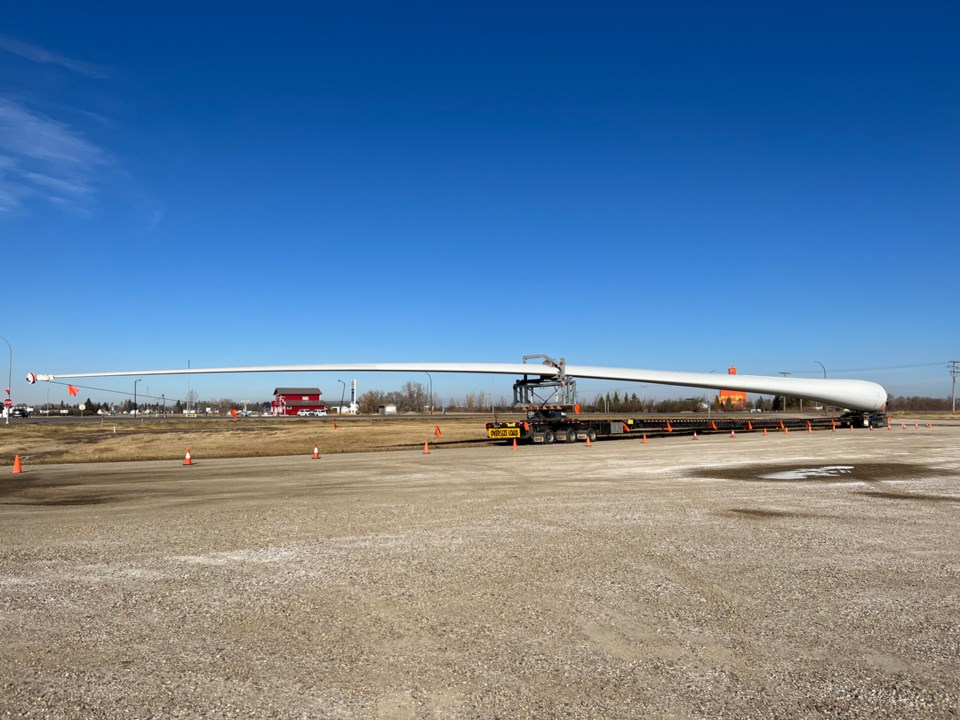The editor:
A couple of items in the Nov. 16 edition of the Mercury delivered some added questions and memories within my sometimes befuddled brain.
The editorial regarding Moe Money resource revenue, and the large turbine blade movement article, authored by Stephanie Zoer, were the subjects.
The resource-based money movement opinion piece triggered a memory I have retained from a conversation I had with an oil company president several years ago, but the thoughts he expressed then, I believe are still relevant.
And, I paraphrase here, of course, but he extended the idea that anyone who may have doubted the relevance of this industry to the province of Saskatchewan might be invited to wander through every hospital in Saskatchewan as a starter.
“Count all the beds, and while you’re doing that put a sticker (decal) on every fourth bed noting that this bed (and services) is being fully paid for by the provincial oil industry.”
He then noted with a chuckle the other three were most likely funded by farmers, potash and coal companies and general corporate and private businesses, as well as the traditional taxpaying community. The important thing, he felt, was the acknowledgement of the vital role the oil and gas industry played in Saskatchewan, even though head offices were most often located elsewhere. They still played the local and provincial financial responsibility game by the rules. I’m guessing they still do.
As for the turbine blade movement, I really enjoyed the narrative of the 79-metre wind turbine blade journey from Duluth, Minn., to Jenner, Alta., through southern Saskatchewan all in the name of adhering to new mandates for energy production from renewable resources versus non-renewables.
Was this single turbine blade moved several hundred miles via gasoline-powered flatbed trucks or electrically-powered vehicles? Take a guess.
The company engaged is Quebec based, the blades are being manufactured in the northeast U.S. and delivered to Alberta. This extended trek and deal does not reek of efficiency in my mind, but I can only question it, not necessarily criticize it. I don’t have all the facts. Perhaps giant blade building is a truly rare art that, so far, is only being done by very few manufacturers with none being in Canada.
How much did the delivery of this one turbine blade add to the overall cost of the Jenner project? The article stated another 125 blades are to be delivered. This will be at what cost in the overall transportation, time, permits, logistics and personnel scheme of things?
What are these huge, heavy blades made from? In other words, when the time comes to replace them in about 20 years, are they recyclable? Can they be chopped up using electric chain saws and ploughed into the fields on which they were located, to add nutrients to the soil that they oversaw for a couple of decades? Or, do these modern-day double dinosaur sized blades need to be disposed of in some other fashion, not yet determined?
The article contained a number of wow factors in respect to size and scope of the turbine blades and their delivery, and, I’m guessing, also a potential wow factor in terms of usage, cost and future worth.
We can only hope these 42 turbines in Jenner Alta., will be capable of pumping out ample megawatts of power daily for decades to justify the effort being put into the delivery and assembly process alone.
Maybe we could and should build wind turbine blades in southern Saskatchewan?
Maybe we could and should devise a means to build them in sections so they could be delivered with some efficacy and later decommissioned in an environmentally-responsible manner.
Maybe we could support and finance already defined and refined carbon capture industries and resources to meet future environmental targets.
Maybe we’re already doing that, but the people who need to know, aren’t paying that much attention because they are distracted by the next new shiny object over there, rather than a homemade, sustainable, environmentally-safe future sitting right in front of them?
Norm Park
Estevan



